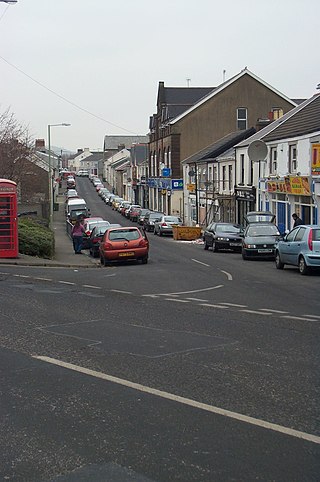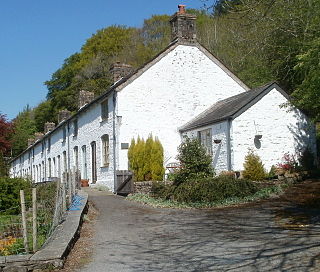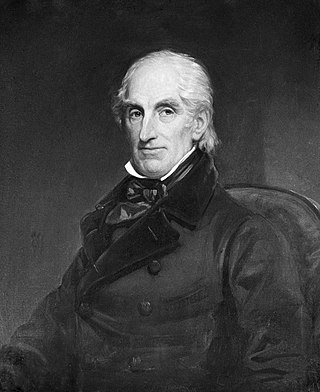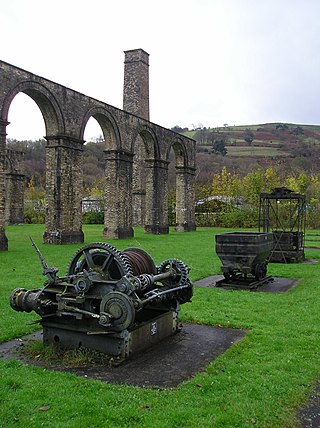
Lady Charlotte Elizabeth Guest, later Lady Charlotte Schreiber, was an English aristocrat who is best known as the first publisher in modern print format of the Mabinogion, the earliest prose literature of Britain. Guest established the Mabinogion as a source literary text of Europe, claiming this recognition among literati in the context of contemporary passions for the chivalric romance of King Arthur and the Gothic movement. The name Guest used for the book was derived from a mediaeval copyist's error, already established in the 18th century by William Owen Pughe and the London Welsh societies.

Blaenavon is a town and community in Torfaen county borough, Wales, high on a hillside on the source of the Afon Lwyd. It is within the boundaries of the historic county of Monmouthshire and the preserved county of Gwent. The population is 6,055.

Ystradgynlais is a town on the River Tawe in southwest Powys, Wales. It is the second-largest town in Powys and is in the historic county of Brecknockshire. The town has a high proportion of Welsh language-speakers. The community includes Cwmtwrch, Abercraf and Cwmgiedd, with a population of 8,092 in the 2011 census. It forms part of the Swansea Urban Area where the Ystradgynlais subdivision has a population of 10,248.

The Severn Railway Bridge was a bridge carrying the railway across the River Severn between Sharpness and Lydney in Gloucestershire, England. It was built in the 1870s by the Severn Bridge Railway Company, primarily to carry coal from the Forest of Dean to the docks at Sharpness; it was the furthest-downstream bridge over the Severn until the opening of the Severn road bridge in 1966. When the company got into financial difficulties in 1893, it was taken over jointly by the Great Western Railway and the Midland Railway companies. The bridge continued to be used for freight and passenger services until 1960, and saw temporary extra traffic on the occasions that the Severn Tunnel was closed for engineering work.
Events in the year 1906 in Ireland.

The Thames Ironworks and Shipbuilding Company, Limited was a shipyard and iron works straddling the mouth of Bow Creek at its confluence with the River Thames, at Leamouth Wharf on the west side and at Canning Town on the east side. Its main activity was shipbuilding, but it also diversified into civil engineering, marine engines, cranes, electrical engineering and motor cars.

Campbeltown single malts are single malt Scotch whiskies distilled in the burgh of Campbeltown, on the Kintyre peninsula in Scotland. Once a major producer of whisky with as many as 30 distilleries, and claiming the title "whisky capital of the world", its production has markedly declined. Most of the distilleries have gone out of business and little trace of them remains. The reason for this decline was that the town was "churning out whisky in volume ... with little concern for quality", according to a 2018 book that covers the entire industry and its history.

Aberaman is a village near Aberdare in the county borough of Rhondda Cynon Taf, south Wales. It was heavily dependent on the coal industry and the population, as a result, grew rapidly in the late nineteenth century. Most of the industry has now disappeared and a substantial proportion of the working population travel to work in Cardiff and the M4 corridor. Many residents also work in the nearby towns of Aberdare and Pontypridd.

The Swansea Canal was a canal constructed by the Swansea Canal Navigation Company between 1794 and 1798, running for 16.5 miles (26.6 km) from Swansea to Hen Neuadd, Abercraf in South Wales. It was steeply graded, and 36 locks were needed to enable it to rise 373 feet (114 m) over its length. The main cargos were coal, iron and steel, and the enterprise was profitable.
B. Hick and Sons, subsequently Hick, Hargreaves & Co, was a British engineering company based at the Soho Ironworks in Bolton, England. Benjamin Hick, a partner in Rothwell, Hick and Rothwell, later Rothwell, Hick & Co., set up the company in partnership with two of his sons, John (1815–1894) and Benjamin Jr (1818–1845) in 1833.

Hot blast refers to the preheating of air blown into a blast furnace or other metallurgical process. As this considerably reduced the fuel consumed, hot blast was one of the most important technologies developed during the Industrial Revolution. Hot blast also allowed higher furnace temperatures, which increased the capacity of furnaces.

Cwmavon is a hamlet about 2 miles south of Blaenavon and 4 miles north of Pontypool. The hamlet is part of the community of Abersychan in the county borough of Torfaen in south east Wales, and is within the boundaries of the historic county of Monmouthshire.

Isaac Daniel Roosevelt was an American doctor and farmer. He was the paternal grandfather of U.S. President Franklin D. Roosevelt.
Sir Ambrose Crowley III was a 17th-century English ironmonger and politician who was returned to the House of Commons in 1713.
This article is about the particular significance of the year 1787 to Wales and its people.

Blaenavon Ironworks is a former industrial site which is now a museum in Blaenavon, Wales. The ironworks was of crucial importance in the development of the ability to use cheap, low quality, high sulphur iron ores worldwide. It was the site of the experiments by Sidney Gilchrist Thomas and his cousin Percy Gilchrist that led to "the basic steel process" or "Gilchrist–Thomas process".

Preston Brook railway station was a station on the Grand Junction Railway serving the villages of Preston Brook and Preston on the Hill in what was then Cheshire, England. It opened on 4 July 1837 when the line opened.

Forge Row is a terrace of seven, originally twelve, cottages build around 1804 for workers at a nearby forge in Cwmavon, Torfaen, south east Wales. The cottages have been sympathetically restored. The terrace is regarded as a fine example of early housing for industrial workers in South Wales, and all the cottages are Grade II* listed buildings. The cottages lie to the east of the Afon Llwyd river.

The Lithgow Blast Furnace is a heritage-listed former blast furnace and now park and visitor attraction at Inch Street, Lithgow, City of Lithgow, New South Wales, Australia. It was built from 1906 to 1907 by William Sandford Limited. It is also known as Eskbank Ironworks Blast Furnace site; Industrial Archaeological Site. The property is owned by Lithgow City Council. It was added to the New South Wales State Heritage Register on 2 April 1999.

Ystradgynlais Community Hospital is a health facility in Glanrhyd Road, Ystradgynlais, Powys, Wales. It is managed by the Powys Teaching Health Board.
















